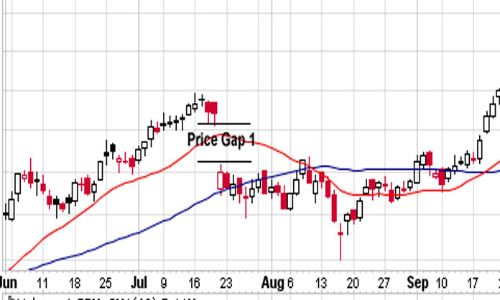Understanding stock price movement

Generally, while referring to market changes, we associate it to price change Which means, a change in the market is a change in the price Wherein this price is the price of a stock, commodity, currency etc So, when we try to analyse the Market Behaviour, we attempt to analyse the behaviour of the price
Generally, while referring to market changes, we associate it to price change. Which means, a change in the market is a change in the price. Wherein this price is the price of a stock, commodity, currency etc. So, when we try to analyse the Market Behaviour, we attempt to analyse the behaviour of the price.
The price of stock in the market has a particular set of patterns or behaviour. Analysing the same, price in a market never moves in a linear direction, it either moves upwards or downwards or to be more precise it moves in a step pattern. This particular movement (up and down) is in a step pattern or a wave pattern.
This pattern of up and down movement of the price is result of correction. For which, technical analysts often use the word ‘Trend’. These trends are either upward, downward or sideways. However, one does not benefit by investing in a stock which moves sideways.
In an uptrend movement the price has higher tops and higher bottoms. In a downtrend movement we observe lower tops and lower bottoms. We should always invest or buy in an uptrend and sell in a downtrend stock.
Even when the stock is moving in an uptrend direction there will be a fall in the price of the stock, what needs to be observed is not the increase or decrease in the price but whether the trend is in an upward movement or downward movement.
Hence, before investing it is wise to study the trend. There will be a cyclical change in the trend of any stock. The general tendency of a trader is to book profit in uptrend moment and exit the market.
The trader needs to understand that in an uptrend movement the stock is gaining strength with its consistent rise in price and so he will profit if he remains invested. The small fall in a price is a simple higher low. A fall in the price is never an indicator of a downtrend.
In a downtrend movement the price of a share falls and even its volume begins to fall. Trend acts as a guide to the investor. It guides him on the time period of the investment or in other words it suggests for how long he can hold the stock.
Let us consider an example. Suppose a trader has three stocks. Two of the stocks are fetching him profit and one is in loss. Let us further assume that he has to square off one stock because of insufficient capital by the end of the trading session.
So, he would prefer to square off the profit fetching stock. He will try to stay invested in the loss fetching stock hoping it would increase. Buttons and help him retrieve the loss. But that may not happen because the stock ismay be in a don't read it would never happen.downtrend.
This is the general mistake which every investor does. One should always try to ride on Profitprofit yielding stocks and exit from loss yielding stocks. To conclude, before you trade, try to identify the trend. As the famous quote goes, trend is your friend until it doesn’t bend. (The author is a homemaker who dabbles in stock market investments in free time)


















